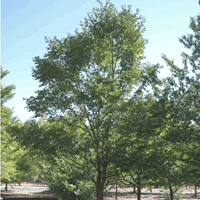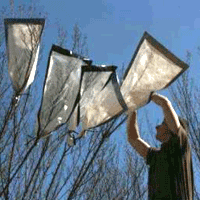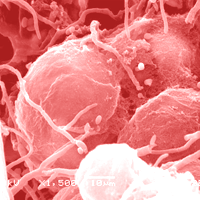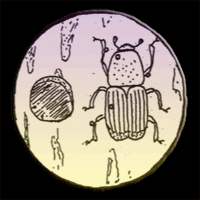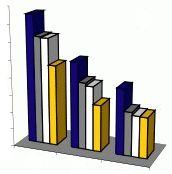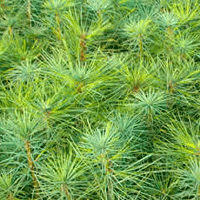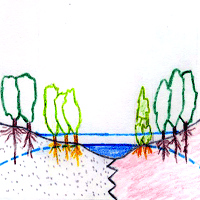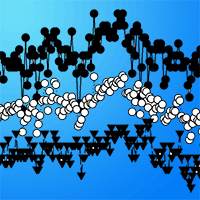
Comparison of commercial elm cultivars and promising unreleased Dutch clones for resistance to Ophiostoma novo-ulmi
Joukje Buiteveld (1) , Bert Van Der Werf (1), Jelle A Hiemstra (2)
iForest - Biogeosciences and Forestry, Volume 8, Issue 2, Pages 158-164 (2015)
doi: https://doi.org/10.3832/ifor1209-008
Published: Aug 07, 2014 - Copyright © 2015 SISEF
Research Articles
Collection/Special Issue: 3rd International Elm Conference, Florence (Italy - 2013)
The elms after 100 years of Dutch Elm disease
Guest Editors: A. Santini, L. Ghelardini, E. Collin, A. Solla, J. Brunet, M. Faccoli, A. Scala, S. De Vries, J. Buiteveld
Abstract
Elms, and especially Ulmus × hollandica have been dominant and very much appreciated trees in cities and rural landscape for centuries in the Netherlands. As a result of two Dutch Elm Disease (DED) epidemics in the 20th century these trees largely disappeared from the landscape. Despite the introduction of new cultivars with increased levels of DED-resistance, by the end of the 20th century the elm had disappeared from the top 20 list of trees produced by Dutch nurseries. New cultivars with increased resistance to DED are used to a limited extent only. Apparently the lasting problems with DED in old cultivars has led to a lack of confidence in the resistance of these latest released cultivars among urban foresters and landscape managers. This paper reports on a study that aims at restoring the position of the elm as a street tree in the Netherlands by providing information on resistance to O. novo-ulmi causing DED of the currently available cultivars. All elm cultivars currently on the Dutch market were compared in an inoculation test. In 2007 a field experiment of 18 cultivars, one species and 10 non-released clones from the Dutch elm breeding program was established. Two cultivars were used as reference clones: “Commelin” (relatively susceptible) and “Lobel” (relatively resistant). In 2008 and 2009 the elms were stem-inoculated with Ophiostoma novo-ulmi and disease development was assessed throughout the summer and the following year. Clear differences in resistance to O. novo-ulmi were found between the cultivars, with “Columella”, “Sapporo Autumn Gold”’ and “Rebella” being highly resistant and significantly different from “Lobel” and “Regal”, “Urban”, “Belgica”, “Den Haag” and the U. laevis seedlings being the most susceptible and comparable to “Commelin”. The non-released clones performed comparable to “Lobel’”or even better. The ranking of the cultivars based on their level of resistance to O. novo-ulmi in this field test corresponds well with experience in urban green practice. Our conclusion is that there is a wide range of cultivars available with a good to excellent level of resistance. The available cultivars have a broad genetic base due to different parentage and use of exotic germplasm in the crossings. This broad genetic background may contribute to the stability of resistance in case new forms of the disease appear. The non-released clones performed well compared to the released cultivars and give good opportunities to further broaden the current range of cultivars on the Dutch and European market.
Keywords
DED-resistance, Elm Cultivars, Ulmus, Inoculation Test, Ophiostoma novo-ulmi
Authors’ Info
Authors’ address
Bert Van Der Werf
Alterra, Wageningen UR, P.O. box 47, 6700AA Wageningen (The Netherlands)
Applied Plant Research, Wageningen UR, P.O. Box 85, 2160 AB Lisse (The Netherlands)
Corresponding author
Paper Info
Citation
Buiteveld J, Van Der Werf B, Hiemstra JA (2015). Comparison of commercial elm cultivars and promising unreleased Dutch clones for resistance to Ophiostoma novo-ulmi. iForest 8: 158-164. - doi: 10.3832/ifor1209-008
Academic Editor
Alberto Santini
Paper history
Received: Dec 20, 2013
Accepted: May 18, 2014
First online: Aug 07, 2014
Publication Date: Apr 01, 2015
Publication Time: 2.70 months
Copyright Information
© SISEF - The Italian Society of Silviculture and Forest Ecology 2015
Open Access
This article is distributed under the terms of the Creative Commons Attribution-Non Commercial 4.0 International (https://creativecommons.org/licenses/by-nc/4.0/), which permits unrestricted use, distribution, and reproduction in any medium, provided you give appropriate credit to the original author(s) and the source, provide a link to the Creative Commons license, and indicate if changes were made.
Web Metrics
Breakdown by View Type
Article Usage
Total Article Views: 54449
(from publication date up to now)
Breakdown by View Type
HTML Page Views: 44776
Abstract Page Views: 3576
PDF Downloads: 4686
Citation/Reference Downloads: 18
XML Downloads: 1393
Web Metrics
Days since publication: 4165
Overall contacts: 54449
Avg. contacts per week: 91.51
Citation Metrics
Article Citations
Article citations are based on data periodically collected from the Clarivate Web of Science web site
(last update: Mar 2025)
Total number of cites (since 2015): 21
Average cites per year: 1.91
Publication Metrics
by Dimensions ©
Articles citing this article
List of the papers citing this article based on CrossRef Cited-by.
References
Zomereik populairste boom voor stedelijk gebied [Pedunculate oak most popular tree for urban green]. Tuin & Landschap 4: 36-37. [in Dutch]
Gscholar
Selecting and testing elms: the Wisconsin elm breeding program. In: Proceedings of the “7th Conference of the Metropolitan Tree Improvement Alliance - METRIA 7: Trees for the Nineties”. The Morton Arboretum, Lisle (Illinois, USA) 11-12 June 1990, pp. 21.
Gscholar
The Dutch elm breeding program. In: “Dutch elm disease research: Cellular and molecular approaches” (Sticklen MB, Sherald JL eds). Springer Verlag, New York, USA, pp. 16-25.
Gscholar
Iep of Olm, Karakterboom van de lage landen [Elm, tree with character of the Low Countries]. KNNV Uitgeverij Zeist, pp. 272. [in Dutch]
Gscholar
Belang en toekomst van de iep [Importance and future of the elm]. PPO-Bomen, Lisse, The Netherlands, pp. 50. [in Dutch]
Gscholar
Randomization, bootstrap and Monte Carlo methods in Biology. Chapman and Hall/CRC, London, UK, pp. 455.
Gscholar
Les ormes résistants à la graphiose [Elms resistant to Dutch elm disease]. Forêt-entreprise 175: 37-41.
Gscholar
Hybrid elms (Ulmus spp.): adaptability in Paris and behaviour towards Dutch elm disease (Ophiostoma novo-ulmi). Acta Horticulturae 496: 107-114.
Gscholar
San Zanobi and Plinio elm trees. Hortscience 37:1139-1141.
Gscholar
Insect vector behavior and the evolution of Dutch elm disease. In: “The elms: breeding, conservation and disease management” (CP Dunn ed). Kluwer Academic Publishers, Boston, USA, pp. 47-60.
Gscholar

